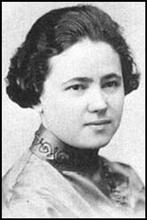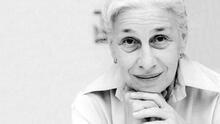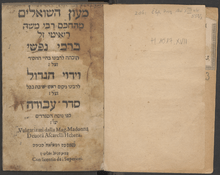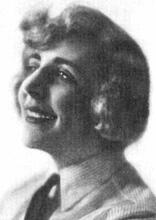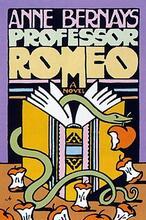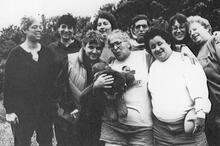Joan Kahn
Joan Kahn had such a gift for choosing and editing bestselling mystery novels that her publishers put her name on their book covers to entice readers. Kahn studied at the Yale School of Art, Barnard College, and the Art Students League and wrote two novels before becoming editor of the Harper Novels of Suspense line in 1947. One of her first selections won the Mystery Writers of America’s Edgar Allan Poe Award for best first novel of that year. It was one of many award-winning novels she edited. She also wrote four children’s books and edited eleven mystery anthologies. In 1985, she received the Ellery Queen Award from the Mystery Writers of America for her lifetime of service.
Article
In 1947, Harper Brothers launched Harper Novels of Suspense under the leadership of a new editor named Joan Kahn. Several years later, in an interview with John Winterich, Kahn spoke about the inception of this extremely successful publishing venture: “At first, every agent cleaned out the bottom drawer. We got something like 200 manuscripts that had been everywhere and seen everybody. I was discouraged and decided I was in the wrong business. But I went through the manuscripts and we took several.” When one of those books, The Horizontal Man by Helen Eustis, won the annual Edgar Allan Poe Award from the Mystery Writers of America as the best first mystery novel of 1946, Kahn decided she “was in the right business.”
After a few more books selected by Kahn won Edgars, Harper added the phrase “A Joan Kahn Book” to its mystery imprint. Kahn edited the work of hundreds of writers, including Tony Hillerman, Dick Francis, John Creasey, Nicholas Blake, John Dickson Carr, and Nicholas Freeling. She introduced American readers to many British writers, including Dorothy Sayers, whose books were out of print until Harper republished her complete works in the 1950s.
In 1985, Kahn received the Ellery Queen Award from the Mystery Writers of America for lifetime service to the industry. When she retired in 1989, she received a special Edgar—she is the only editor who has ever received one—in recognition of her distinguished career.
A native New Yorker, Joan Kahn was born on April 13, 1914, the oldest child of Ely Jacques Kahn, an architect renowned for his mastery of the art deco style, and Elsie (Plaut) Kahn. Her brother, E.J. Kahn Jr., was a writer; her sister, Olivia, is a painter. Kahn attended the Horace Mann School, the Yale School of Art, Barnard College, and the Art Students League. She wrote two novels—To Meet Miss Long (1943) and Open House (1946)—and four children’s books, and edited eleven mystery anthologies.
In 1980, she left Harper to join Ticknor & Fields. She also worked at E.P. Dutton and St. Martin’s Press, where she stayed until she retired. Joan Kahn died on October 12, 1994.
Selected Works by Joan Kahn
Chilling and Killing (1978).
The Edge of the Chair (1967).
Hanging by a Thread (1969).
Hi, Jock, Run Around the Block (1978).
Ladies and Gentlemen, Said the Ringmaster (1938).
Open at Your Own Risk (1975).
Open House (1946).
Ready or Not, Here Come Fourteen Frightening Stories! (1987).
Seesaw (1964).
Some Things Dark and Dangerous (1970).
Some Things Fierce and Fatal (1971).
Some Things Strange and Sinister (1973).
Some Things Weird and Wicked: Twelve Stories to Chill Your Bones (1976).
To Meet Miss Long (1943).
Trial and Terror (1973).
You Can’t Catch Me (1976).
Bannon, Barbara A. “Authors & Editors.” Publishers Weekly 196 (December 29, 1969): 21–22.
Kahn, Joan. Papers and book collection. Sterling Library. Yale University.
Rule, Sheila. “Joan Kahn, 80, Respected Editor of Mysteries, Dies.” The New York Times, October 13, 1994, B15.
Who’s Who in America. Vol. 1 (1984–1985): 1704.
Winterich, John T. “Joan Kahn and Harper Mysteries.” Publishers Weekly 166 (July 31, 1954): 450–453.



